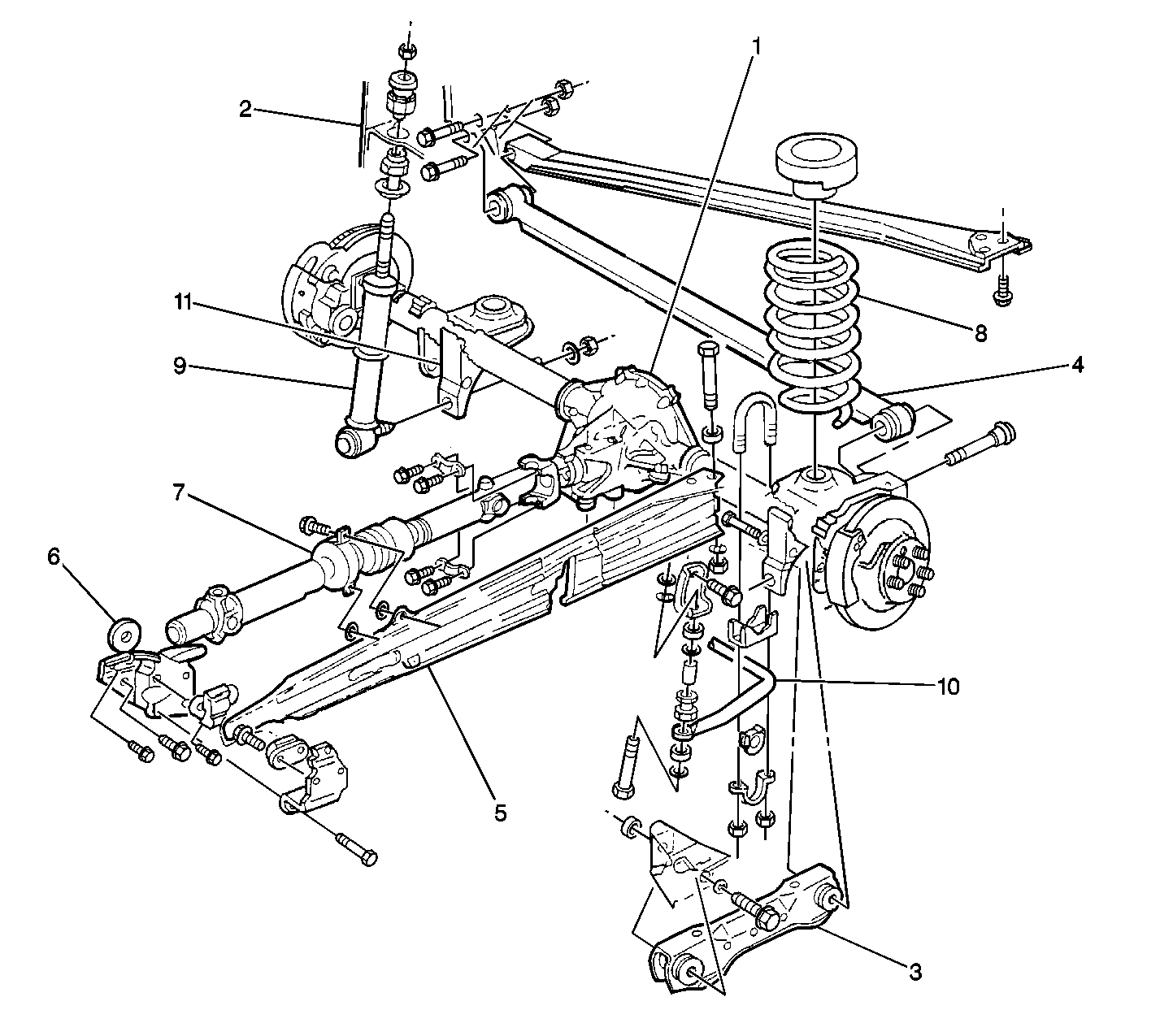For 1990-2009 cars only

| • | The rear axle (1) attaches to the vehicle with a link suspension system. |
| • | The rear axle housing connects to the floor panel (2) by two lower control arms (3) and a track bar (4). A single torque arm (5) is used in place of an upper control arm. |
| • | The torque arm (5) rigidly mounts to the rear axle housing at the rear. |
| • | The torque arm (5) mounts through a torque arm bushing (6) at the front. |
| • | On some vehicles, the torque arm (5) also mounts to the two piece propeller shaft center support bearing (7) with two bolts. |
| • | The rear springs (8) support the weight of the vehicle. |
| • | The rear shock absorbers (9) mount to the rear of the axle housing and provide ride control. A rear stabilizer shaft (10) is also part of the suspension system. |
| • | The rear shock absorbers (9) mount at the bottom with a nut to brackets (11) welded to the rear of the rear axle housing and also mount at the top of the floor panel (2) with a nut. |
| • | The only service that the rear shock absorbers require is replacement for the following conditions: |
| - | Loss of resistance |
| - | Damage or leaking fluid |
| • | For rear shock absorber diagnosis, refer to Suspension Strut and Shock Absorber Testing - On Vehicle in Suspension General Diagnosis. |
